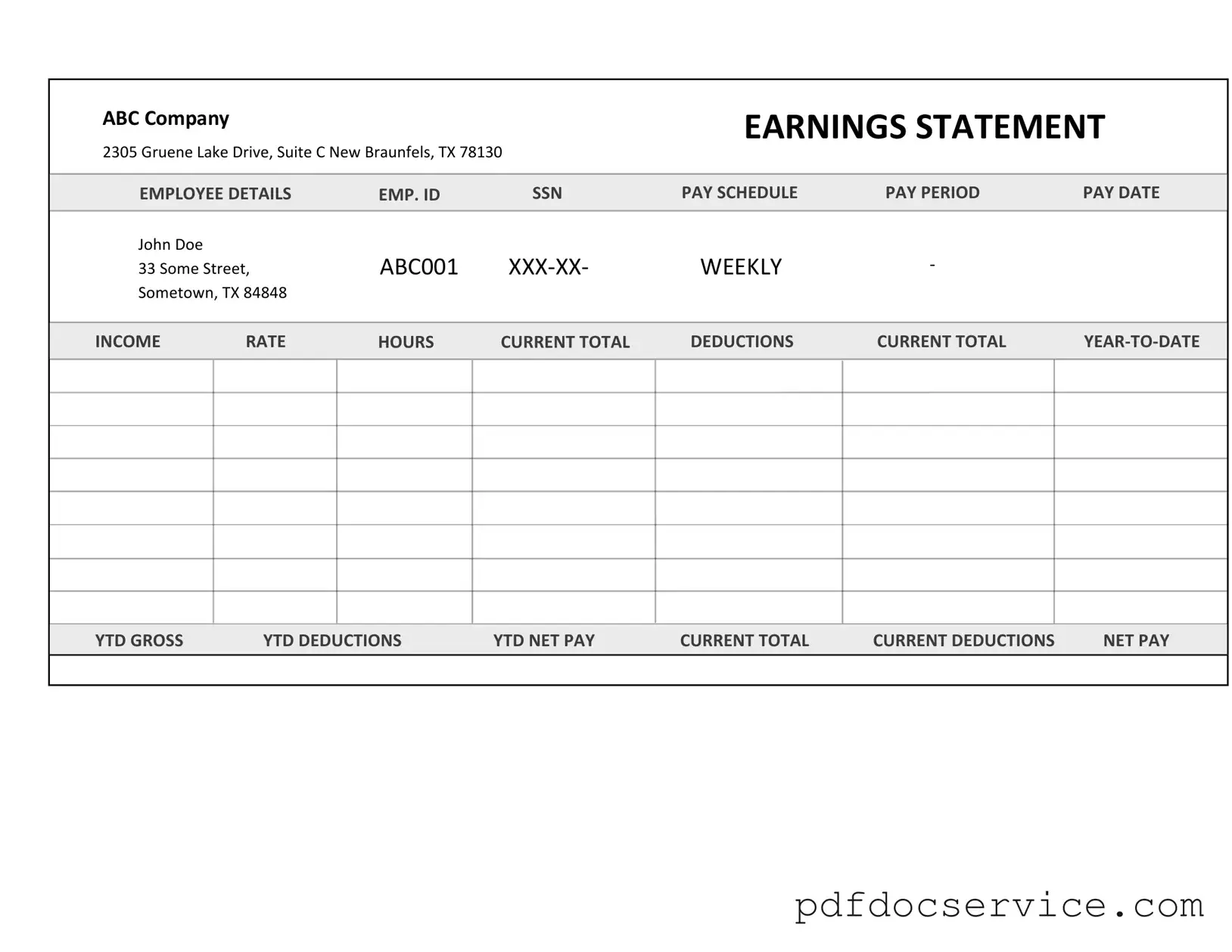What is an Independent Contractor Pay Stub?
An Independent Contractor Pay Stub is a document that outlines the earnings and deductions for independent contractors. Unlike traditional employees, independent contractors operate as self-employed individuals. The pay stub provides a detailed summary of the contractor’s income for a specific period, including any applicable deductions or taxes withheld.
Why do independent contractors need a pay stub?
Independent contractors may require a pay stub for several reasons:
-
To track income and expenses for tax purposes.
-
To provide proof of income when applying for loans or mortgages.
-
To maintain accurate financial records for personal budgeting.
A standard pay stub for independent contractors usually includes the following information:
-
Contractor's name and contact information.
-
Business name and contact information of the hiring entity.
-
Pay period dates.
-
Total earnings for the period.
-
Deductions, if any, such as taxes or fees.
-
Net pay after deductions.
How can independent contractors create a pay stub?
Independent contractors can create a pay stub using various methods. They may choose to use online pay stub generators, accounting software, or templates available for download. It is important to ensure that all necessary information is accurately included to avoid any discrepancies.
Are independent contractors required to provide pay stubs to clients?
While there is no federal law mandating independent contractors to provide pay stubs, many clients may request them for their records. Providing a pay stub can enhance professionalism and transparency in the working relationship.
What should contractors do if they do not receive a pay stub from a client?
If an independent contractor does not receive a pay stub, they should first reach out to the client for clarification. It is advisable to request a pay stub for record-keeping purposes. If the client is unresponsive, contractors may consider creating their own pay stub based on the agreed-upon payment terms.
Can independent contractors use pay stubs for tax reporting?
Yes, independent contractors can use pay stubs to assist with tax reporting. The information on the pay stub can help in calculating total income and identifying any deductions that may apply. However, it is crucial to keep additional records, such as invoices and receipts, to ensure accurate reporting.
What are the benefits of using a pay stub for independent contractors?
Using a pay stub offers several benefits for independent contractors:
-
Improved financial tracking and management.
-
Clear documentation of earnings for clients and tax authorities.
-
Enhanced credibility with clients and financial institutions.
